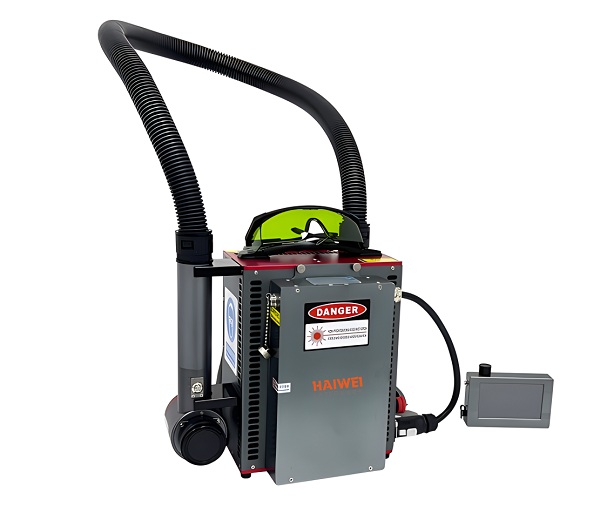Laser Cleaning Machines: A Practical Solution for Industrial Surface Preparation
How Laser Cleaning Works in Real Applications
The laser cleaning machine uses high-intensity pulsed laser beams to remove contaminants like rust, paint, oil, and oxide layers from metal surfaces. Unlike sandblasting or chemical methods, it doesn’t require media or solvents. The process works through selective ablation—where the contaminant absorbs the laser energy and vaporizes, while the underlying substrate remains intact due to different absorption thresholds.

Efficiency and Process Control
One key advantage of a laser cleaning machine is its precision. Users can adjust pulse frequency, beam width, and scanning speed to match the material and contamination level. This allows for consistent results on various surfaces, including steel, aluminum, and composites. For example, removing rust from structural steel before welding can be done quickly without damaging the base metal, improving weld quality and adhesion for subsequent coatings.
Integration into Production and Maintenance Workflows
These systems are increasingly used in automotive, aerospace, and mold maintenance operations. Handheld models offer flexibility for field use, while automated versions integrate into production lines with robots or CNC stages. Most units connect to standard power supplies and require only cooling and fume extraction support.
Operating Costs and Safety Considerations
While the initial investment is higher than traditional methods, laser cleaning reduces long-term costs by eliminating expendables like blasting media or chemicals. There’s also less waste to handle, supporting environmental compliance. However, proper safety measures are essential: operators need laser-safe eyewear, and enclosures or curtains must be used to meet Class 1 safety standards (IEC 60825).
Maintenance and Reliability
Fiber-based laser cleaning machines have no moving parts in the laser source, leading to low maintenance needs. Regular inspection of optics and cooling systems ensures sustained performance.
In summary, laser cleaning is not a replacement for every cleaning method, but it offers a clean, controllable, and repeatable option where precision, environmental impact, and surface integrity matter.
Recent Posts
- What are the advantages of laser welding machines in lithium battery pack production lines?
- What issues should be noted when choosing a lithium battery pack production line?
- Quality Inspection and Control of Lithium Battery Module Pack Production Line
- Cell grouping and sorting process in lithium battery module pack production line
- What are the safety hazards of lithium battery pack production lines and how can they be prevented?
INQUIRY

